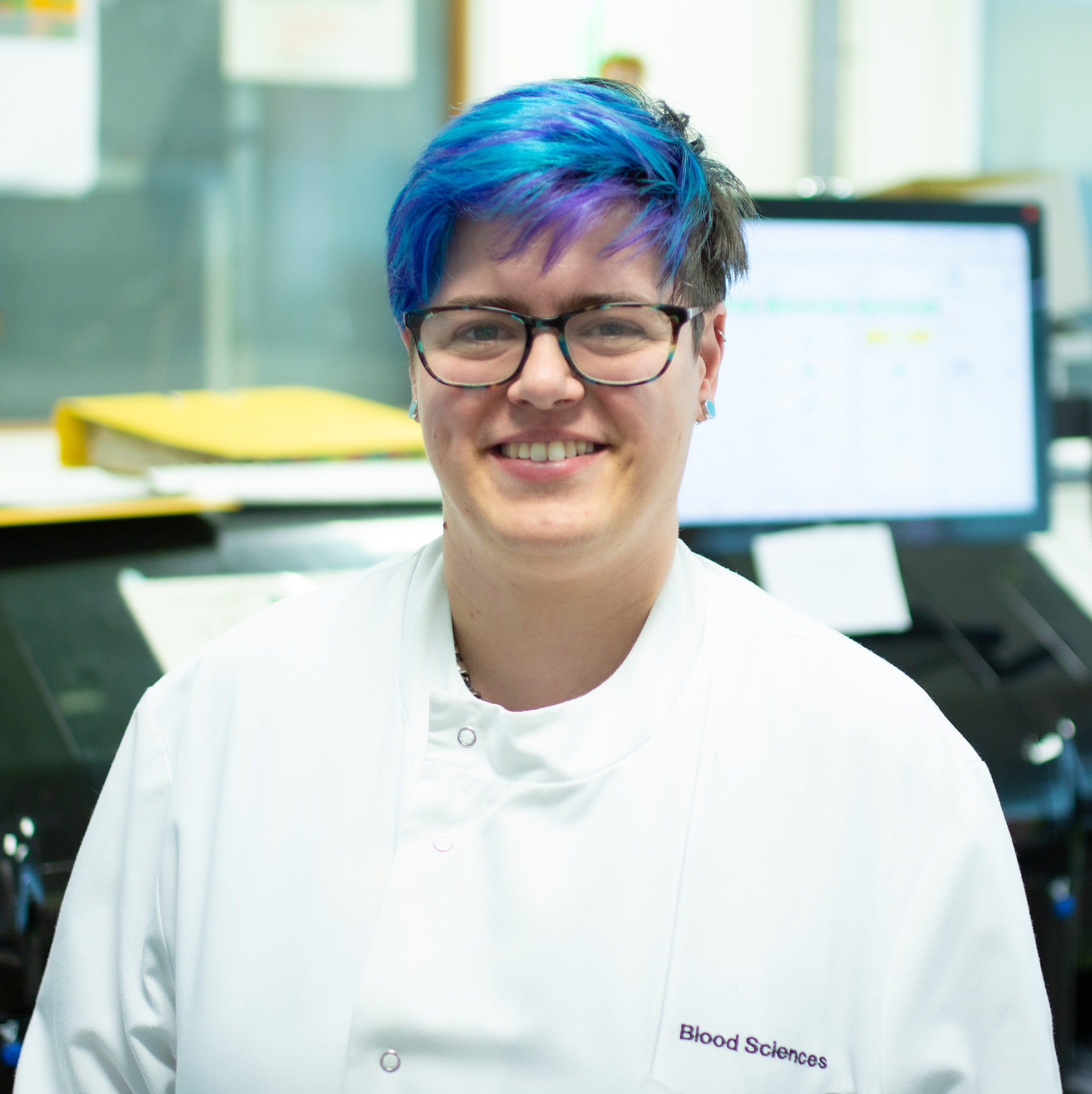
Biomedical Science Day - meet Hannah Scholes
Have you ever had a blood test?
You’ll be familiar with the friendly phlebotomist, who takes your blood and labels the tubes it is contained in – but there is a whole team behind the scenes that most people are totally unaware of.
The actual tests that give your medical team valuable information about your health are performed by biomedical scientists, such as 30-year-old Hannah Scholes.
Hannah is one of dozens of biomedical scientists working for East Kent Hospitals, helping to analyse millions of blood samples each year to give clinicians vital information to help them decide on diagnoses or treatment.
She said: “I think we are like detectives, looking for clues. We can tell from your blood sample whether you are bleeding, if you’ve had a recent blood transfusion, and of course whether you’ve got certain diseases like malaria.
“We deal with samples from our wards and clinics, as well as from GP surgeries, and they all go through our analyser machines which can check a whole host of things.
“If the machine picks up anything unusual we will then have a look at it on a slide and there are a lot of things that can be picked up by the human eye.
“Recently I detected hairy cell leukaemia in a blood sample; the white cells literally look like they have hairs coming out of them.”
All results are fed back to the clinician who requested the tests, or passed to specialists such as haematology consultants for a formal diagnosis.
Hannah also works in blood transfusion, and during night shifts will cover the whole biomedical science department, including biochemistry.
She joined the team after studying biological science at university then working in pharmaceutical research and development until her role was made redundant.
Her first NHS job was as a healthcare science assistant, working in sample reception to book in the different samples, before being promoted to a senior role loading the samples on the analyser.
She said: “I could see what the biomedical scientists were doing in the lab and I wanted to do that, so I contacted the Institute of Biomedical Science who checked my degree.
“I was able to do some top-up modules to convert it which I did while I was working, so I had a year of eat-sleep-work-study but it paid off when I passed.”
While working as a trainee biomedical scientist, Hannah was able to complete her Health and Care Professions Council registration portfolio and successfully become a registered biomedical scientist.
She said: “We don’t see patients but we do get to know the names of some of the regulars and we can see their progress, and it’s lovely to see someone’s results improve as they get better.
“The team is brilliant; there are a lot of us hidden away, and the department is open 24 hours a day, 365 days a year.
“It took a lot of work to get here but it is really good to know I am making a difference to people’s care and treatment.”